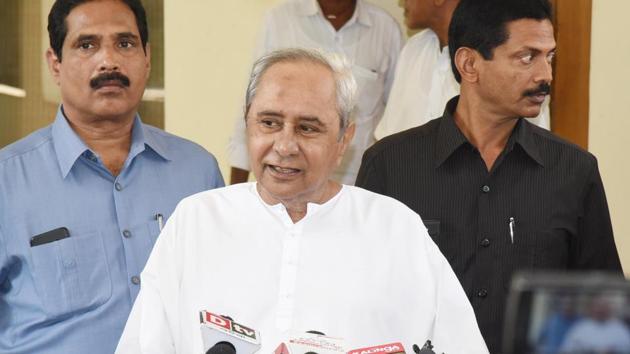Can the Naveen model counter Modi?
Even if a United Front-like 1990s experiment appears unlikely in case the BJP fails to achieve its 2014 performance, don’t rule out a greater role for the regional supremos in any post-May 23 ruling dispensation
Politics allows for no illness or any sign of physical vulnerability, especially at election time. This might explain why the notoriously camera shy Odisha chief minister, Naveen Patnaik, had to telecast a video of himself working out in the gym, if only to allay persistent rumours of his failing health. Patnaik, one of the country’s longest-serving chief ministers, is arguably the most enigmatic. He can scarcely speak Oriya, is not a natural orator, has no glitzy marketing machine by his side, and yet remains undefeated in over two decades in politics. In an election in which the entire focus is almost obsessively on the Modi model of high decibel political rhetoric, is there an alternative Naveen model that perhaps offers a counter to the Bharatiya Janata Party’s (BJP) larger than life mascot?

Right through this election campaign, a persistent question asked has been: Modi versus who? While Rahul Gandhi has shown an earnest energy, he remains a fair distance away from Modi in the national popularity stakes. Somehow, he hasn’t been fully able to shake off the tag of being an entitled dynast. Ironically, Patnaik too is a dynast, the son of the formidable Biju Patnaik, whose death in 1997 suddenly transformed his son’s life from the dazzle of Lutyens’ Delhi to the more prosaic universe of Bhubaneshwar’s Naveen Niwas. And yet, from a privileged dynast to a regional strongman, Naveen babu is part of a constellation of state leaders who offer a counter-narrative to the one nation, one party, one leader chant. From K Chandrashekar Rao (KCR) in Telangana to Mamata Banerjee in West Bengal to Patnaik in Odisha, each of these leaders is challenging the Modi monopoly over the political discourse within their bastions.
In the age of the elected autocrat, each of these regional bosses often display the same authoritarian tendencies they accuse the national Big Boss of. The Biju Janata Dal is a one person show as is the Trinamool, or indeed the Telangana Rashtra Samithi. If anyone is allowed entry into the charmed inner circle, he or she must almost necessarily be a family member. Patnaik is a slight exception here since he is emblematic of another emerging trend of the solely dominant politician, whose party’s future without him at the helm appears distinctly bleak and uncertain. These satraps can get away with their despotic behaviour because of their visible local connect with their voter. Would any national party leader, for example, get away as KCR did without even a functional cabinet for almost two months after his December election victory? Or as Mamata Banerjee does by disallowing her rivals at times from even undertaking routine political meetings?
The power of the regional satraps primarily stems from their complete control over the state administration. Most of them work through a tightly knit group of well-trained bureaucrats and police officers whose loyalty is expected to be to the Supreme Leader above all else. It is no secret, for example, that the most powerful man in Odisha after the chief minister is one of his hand-picked bureaucrats: The supremo trusts government officials much more than political colleagues who are often seen as potential rivals.
In effect, these politicians have been able to create a single window clearance system, making their governance style more focused and decisive, if, at times, mercurial and autocratic. And because their politics is rooted in a more limited geographical area, they can connect faster and with greater effectiveness than their national counterparts. It should come as no surprise that Patnaik’s Kaalia plan for landless farmers and KCR’s Rythu Bandhu scheme for farmers are widely seen as superior to what both the BJP and the Congress have had to offer to the kisan. Or that Mamata’s Kanyashree project for the girl child has received unqualified support.
Which brings one back to the central question: Modi versus who? The mahamilawat (great confusion) that the BJP is so dismissive of includes a coalition of many of these regional leaders. Add the DMK, Jagan Mohan Reddy/Chandrababu Naidu, and indeed, even an Akhilesh and Mayawati to the Naveen-Mamata-KCR troika, and there is a possible 150 plus seat grouping in the next Lok Sabha that could offer a potential challenge to any national leadership that is contemptuous of an increasingly federalised India. Ironically, if Modi is unable to repeat his remarkable single party majority of 2014, it is to these leaders even he — a one-time Gujarat satrap — may well have to turn as potential allies in the future. Which is why even if a United Front-like 1990s experiment appears unlikely, don’t rule out a greater role for the regional supremos in any post-May 23 ruling dispensation.
Post-script: While interviewing Patnaik I forgot to ask him a question that has always intrigued me: Is being single a marker for success in 24x7 competitive politics? A few days later, he answered my question on Twitter: “Being single is no mantra for success nor is it lonely. Four and a half crore people of Odisha are family for me.” It’s the kind of sharp answer which at a national level is seen to make the karmayogi Modi, too, such an attractive proposition for his supporters!
Rajdeep Sardesai is a senior journalist and author
The views expressed are personal






